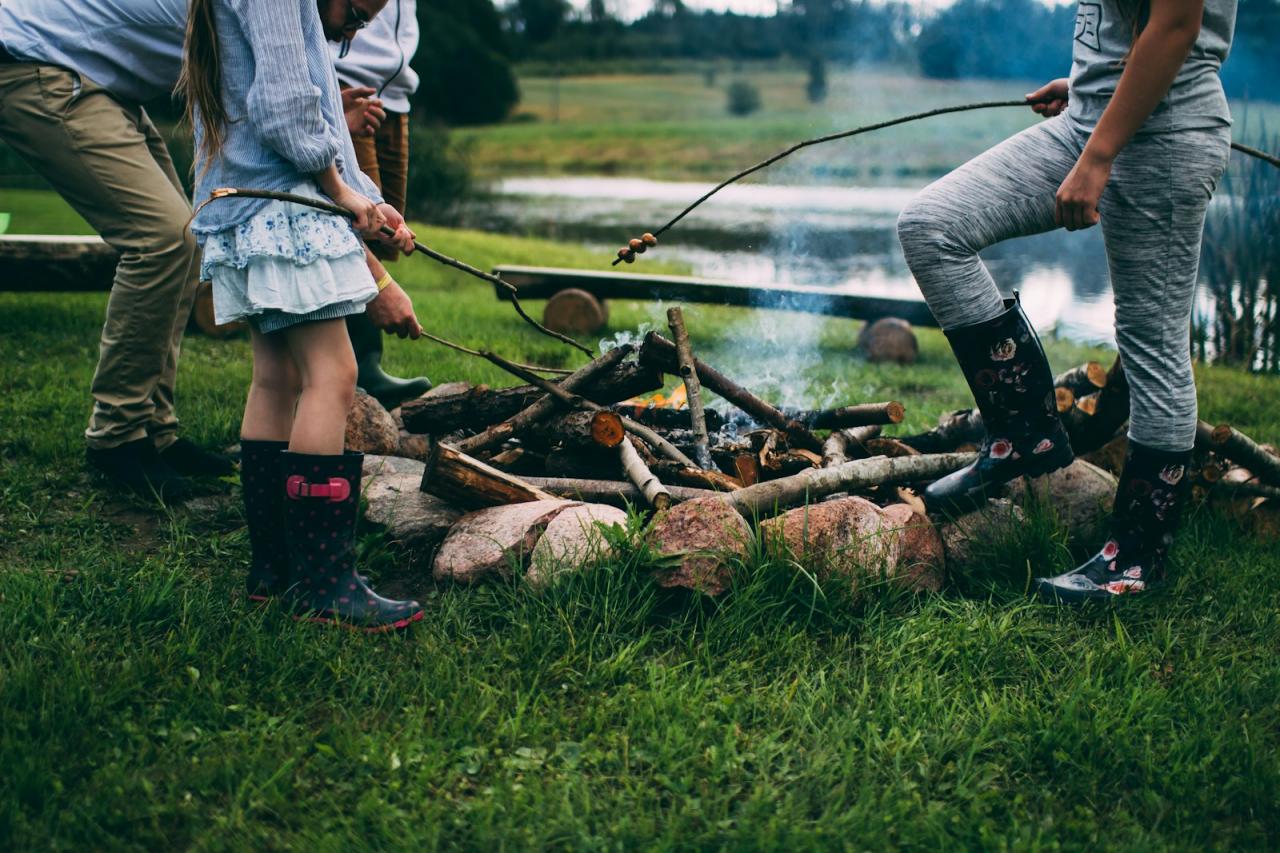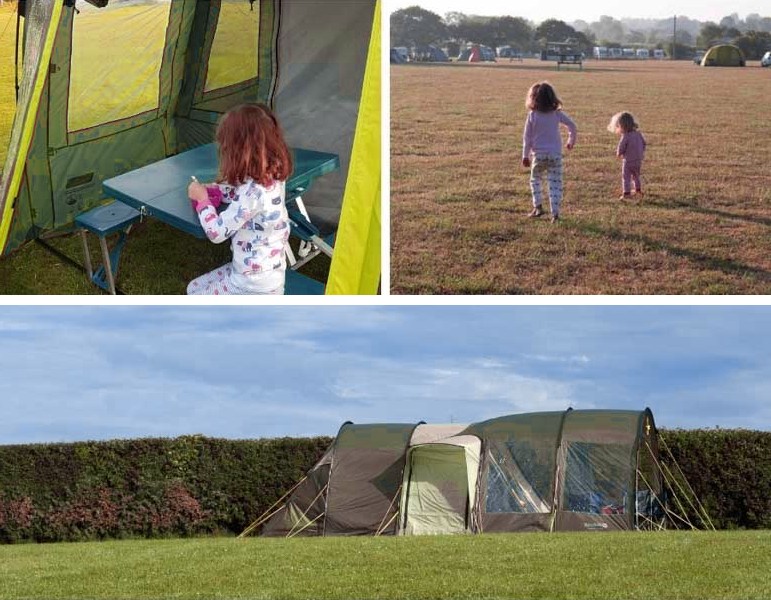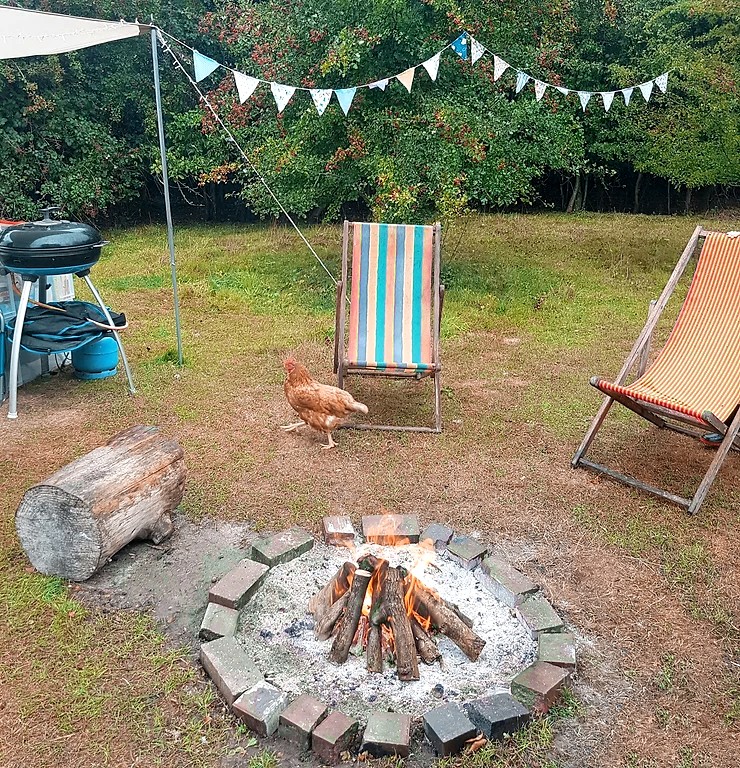
So you’ve enjoyed camping in the past, but now you have kids. The thought of nappies at a campsite or the port-a-cot in the tent might be enough to scare you off. However why not remain focused on the positives of camping for kids and with the attitude of “the glass is half full” look at how camping with the family can be a fun filled experience.
For us, camping with the family isn’t just about pitching tents and building fires; it’s about grabbing the adventure that awaits us beyond the comforts of home. It’s about immersing ourselves in nature and creating fun memories.
So if you are new to camping with the family, here’s our ultimate guide on how to get it right!
Camping with babies
When camping with babies, simplicity should be your guiding principle. Strive to streamline the camping experience, ensuring that it remains manageable for both parents and infants. From selecting suitable campsites to preparing essential gear, every decision should be made with comfort and safety in mind.
- You may need to consider staying somewhere that has powered sites ensuring you can heat up or sterilize a bottle.
- You may need to upgrade that two man tent that accommodated you and your partner for years, with afamily sized tent, perhaps one with two rooms, allowing you a safe haven from the sun for your baby to play.
- A benefit of camping with a baby is that they are still young enough that you will not have to worry about them wandering off. This can be a very relaxing getaway for the whole family.
Camping with toddlers
Camping with toddlers is a delicate balance between supervision and personal time for parents. As our little explorers navigate their natural environment, foster their curiosity while ensuring their safety in unfamiliar surroundings.
- They are still a little bit young to be teaching them rules on safety, so ensure you set a time line with your partner, giving each parent time out from supervision, some me time. That way they will appreciate the time spent with your toddler.
- Kids love nature, and camping is one big nature playground. Imagine your toddler’s excitement as they touch and feel leaves, twigs and other natural resources for the first time. It will have you seeing nature from a totally different perspective.
- Plus let’s face it, toddlers are often highly entertaining and will no doubt help give your campsite some atmosphere!
Camping with older kids
As our children grow older, camping becomes more collaborative, with each family being able to contribute.
- Ensure you have an adequate size tent to accommodate your family. Ideally, pick a tent larger than your family size. For example, a 4-person tent accommodates a couple comfortably, while a 6-person tent suits a family of four.
- Consider whether you prefer airbeam or tent poles for your camp. While airbeam tents are easier to set up, they can be heavier and bulkier to transport.
- Invest in a tent with both a living area and a porch section. This setup provides a designated space for relaxation, particularly during wet weather. See more about picking a tent here.
- Talk to your kids about camp safety, teaching them about the importance staying at the site, and only investigating further if they have an adult with them. Also them what to do if they do get lost.
Practice at home
If your children are very young, it’s a good idea to have a practice camping session at home. You could start up putting the tent up in a playroom and then try it again in the backyard.Let them get used to sleeping in a sleeping bag. If they’re scared of the dark, make sure each one has their own flashlight. Also, Mom or Dad, it might be a good idea for one of you to sleep with them the first time. And don’t be surprised if they want to go inside in the middle of the night.This is a process.

Have you considered a caravan?
If you’ve never been camping before, a caravan is a great place to start when camping for kids. You can access a powered site, communal bathroom facilities, and depending on whether you choose to visit a state of the art caravan park or something a bit more rural, you may even have entertainment options available too, such as playgrounds, swimming pools, BBQ stations etc.
All of this will help minimize the number of things you’ll need to pack to bring on your family camping getaway. Once you’ve mastered this and you have the buy-in of your children, you can choose to be a bit more adventurous with your destinations. Caravans can be hired for a reasonable price, but it is likely to be a little more expensive than just camping. However, it may be more convenient and less overwhelming if it is your first time.
Sharing the experience
Personally the thing that makes camping for kids easy and fun is if you share the experience with another like minded family. Not only does this reduce how much you’ll need to bring along, as you can share the load. If you camp with another family with similar aged children, you’ll find you are less likely to be faced with the challenge of keeping them entertained.
Preparing ahead for family camping
Try to involve your children in the preparation for the trip. Help them to pick out clothes. It’s a good idea to pack each day’s worth of clothes in a zip lock bag. Then they will have a bag for each day. They can put their dirty clothes back in the bag at the end of the day. This is a good idea for the adults too. There’s nothing worse than a tent with clothes strewn all about inside it.
Make sure each child has their own flashlight. This will greatly add to their comfort at night in their tent or just walking around the campsite after dark. Plus, just think of the hand shadow puppets they can make at night!
Research campgrounds that offer amenities and activities suitable for children within the age bracket of your party. For example, electric hookups, quiet family areas, or even a playground. Other things that might figure in your campground choice could be running water, flush toilets, showers, and a camp store. It’s fine to rough it, but not at first.
Try to pick a weekend where no rain is predicted. Nothing can ruin a child’s first camping trip like a wet, soggy tent and sleeping bag. Also, try to pick a site that is reasonable close to home. A long car ride can really dampen enthusiasm.
Selecting the perfect family campsite
Choosing the right campsite lays the groundwork for a successful family camping adventure. There are many campground options, including national parks, state parks, and privately-owned campgrounds. Each type offers unique landscapes, amenities, and recreational opportunities, allowing families to tailor their camping experience to their preferences.
Look for campgrounds specifically designed to accommodate families, offering amenities such as playgrounds, nature trails, and organized activities for children. Family-friendly campgrounds prioritize safety, cleanliness, and accessibility, ensuring a comfortable and welcoming environment for families of all sizes. Look for well-maintained facilities, clearly marked trails, and designated fire pits.
From swimming and fishing to hiking and wildlife viewing, prioritize campgrounds with activities that cater to your family’s interests and preferences, fostering a sense of adventure and exploration in young campers.

Essential camping gear for families
Having the right gear ensures comfort, safety, and convenience throughout your outdoor experience. From shelter to safety equipment, here’s a list of essential camping gear for families.
- Opt for spacious family tents with multiple rooms or dividers for added privacy and comfort. Look for features like waterproof materials, sturdy poles, and ample ventilation to ensure a comfortable night’s sleep for everyone.
- Pack sleeping bags rated for the appropriate temperature range and insulation type to keep everyone warm and cozy during chilly nights.
- Consider air mattresses or sleeping pads for added comfort and insulation from the cold ground.
- Don’t forget extra blankets or comforters for added warmth as it can get chilly overnight.
- Bring along a portable stove or grill for cooking meals, along with lightweight cookware, utensils, and food storage containers.
- Consider collapsible tables for food preparation.
- A good camping cooler is recommended to keep your food fresh.
- Collapsible chairs are essential for comfortable dining and sitting around the fire!
- Don’t forget to pack essentials like matches, lighters, firelighters, and fuel for your cooking appliances.
- Carry a comprehensive first aid kit stocked with bandages, antiseptic wipes, pain relievers, and other medical supplies for treating minor injuries and illnesses.
- Pack flashlights or headlamps with extra batteries for night time visibility and navigation.
- A multi-tool or pocket knife is useful for various outdoor tasks and emergencies.
- Be sure to pack baby wipes / antibacterial wipes for those moments when you need to freshen up the kids.
- Pack bug spray or bug wipes, preferably the non-toxic and DEET-free varieties, to ward off pesky insects and avoid bug bites.
Setting up your camp
Before setting up tents and equipment, survey the campsite for the best location. Look for level ground, adequate drainage, and natural windbreaks if possible. Choose a spot away from potential hazards like dead trees, rocky terrain, or low-lying areas prone to flooding.
Clear the ground of any sharp objects that could puncture the tent floor. Lay out your tent footprint or groundsheet to protect the tent bottom from abrasion and moisture. Assemble all tent poles, stakes, and guylines before starting assembly. Tension the tent fabric evenly to prevent sagging and ensure proper ventilation. Stake down the corners of the tent securely and use guylines to anchor the tent in windy conditions.
Organize gear and personal belongings in designated areas to minimize clutter and maximize space. Consider using storage containers, hanging organizers, and gear lofts to keep essentials easily accessible and well-organized. Additionally, consider laying out a blanket or towel outside the camping tent entrance. This provides a spot to wipe down feet, hands, faces, and limbs, preventing dirt from being tracked inside the tent.
Set up a cooking area with your portable stove or grill, and pop up table, along with cooking utensils and food supplies. Create a dining and relaxation area with camp chairs, hammocks, or picnic blankets for unwinding and enjoying the outdoor scenery.
Meal planning and cooking
Think of recipes that require minimal ingredients and equipment, such as just-add-water meals or one-pot dishes, to make your cooking as stress free as possible. Foil packet meals are easy for the kids to put together. These can be cooked on a stove or even right on the coals of the campfire. We’ve provided some easy meal ideas here. Organize food supplies efficiently, packing perishables in coolers with plenty of ice and non-perishables in sealed containers to prevent spoilage and attract unwanted critters.
Remember to bring lots of snacks too! Sitting around the campfire at night is the best part of camping as far as I am concerned.But don’t forget the marshmallows. Another treat we had was Jiffy popcorn in little tin pans which you can pop right on the fire.
Involving kids in meal preparation can develop valuable life skills but also make their camping trip fun. Encourage children to participate in cooking activities, assigning age-appropriate tasks like washing vegetables, stirring ingredients, or assembling sandwiches. There are loads of fun recipes you can make with the kids from baked potatoes to banana boats; you’ll have your kids wanting to be master chefs in no time.
And of course if you feel like you need a rest, there is always the option of going to the nearest tavern, café or diner to eat. It’s not cheating!
Family camping safety tips
You need to remember that your kids are exposed to the outer environment, which can be a risk. Teaching them about the unknown hazards and surprises during camping is worthwhile.
- Depending on the weather and temperature, you need to make your kids wear suitable clothes.
- It is good to dress them in layers to keep them warm. It would also be easy for them to remove the upper layer whenever the climate is hot.
- Be prepared for climate swings. Bring rain coats, caps and umbrellas to keep them protected from rain.
- Instead of wearing normal shoes, wear tracking or sport shoes.
- Carrying water from home or the campsite is safer than drinking from streams, lakes or rivers directly.
- Another option is to take portable water filters with you, which can filter any kind of water.
- You can take along iodine tablets, which liquefy easily in water and purify it.
- To avoid your kids getting bitten by insects, apply repellent creams before sleep. In case of critical conditions like swelling, having difficulty in breathing and bite by honey bees etc., you have to immediately take him to the nearest hospital for further proceedings.
- Beware of wild animals, they may be dangerous and may spread diseases. Children might be interested in watching these creatures. As such, teach them not to touch, pat, feed or go closer to them. Diseases spread through such creatures include Hantavirus, Rabies and many kinds of infections.
- Carry torch lights and extra batteries with you. You can use it to see in the dark and also frighten wild animals that may approach the camp site looking for prey at night.
- Make sure your children understand fire safety rules. Teach them how to make a safe fire ring and to always have water available to put out the fire.
- Let the kids know they can roam but they must stay within sight of your campsite. If you are hiking, make sure they don’t run ahead out of sight.
- Each child could carry a whistle around their neck. The universal signal for help is three blows of the whistle. Make sure that your child uses it only at the time of emergency instead of sending false alarms.
Remember respectful camping
Look to see if there are designated quiet hours to maintain a peaceful atmosphere. Practice courtesy towards neighboring campers by keeping noise levels to a minimum as it gets later, and respect their privacy.
Refraining from feeding or approaching animals and observe them from a safe distance to minimize disturbance to their natural habitat.
Before leaving the campsite, try to leave no trace of your presence. Dispose of trash and recycling materials in designated waste, and try to restore the campsite as you found it, leaving behind only footprints.
Ideas to make your trip fun
Ultimately, your camping trip is there to have fun with your family, and there are lots of things you can do. Here are some ideas:
- Explore nearby nature trails and hiking routes, encouraging kids to discover the wonders of the wilderness firsthand.
- Try water-based activities like swimming, fishing, and kayaking.
- Go for a nature-themed scavenger hunt or wildlife spotting, igniting curiosity and excitement about the natural world.
- Encourage your kids to collect leaves, flowers, pine cones, shells, etc. They can draw pictures of them or arrange them on a collage. Each child could have a special memory box to hold all of their treasures.
- Organize campfire activities such as spooky campfire stories, a marshmallow roasting contest, a game of flashlight tag after dark, or a stargazing session.
- Bring along sports equipment for a game of rounders, frisbee or even soccer.
- Visit nearby attractions for a day out.
- It’s always good to have cards, pencil games, like follow the dot, or coloring books.
- Bubbles and chalk make for an entertaining half hour.
- Make sure to bring your camera/phone to document your camping trip. If the kids are old enough ask them to take some pics too.
In summary
Whichever way you look at it, camping with the family and especially with kids can be a joyful experience, regardless of the age of your children. The best thing you can do is plan and prepare before you go, and start simple.
You’ll have your children begging you to go camping again and again!



